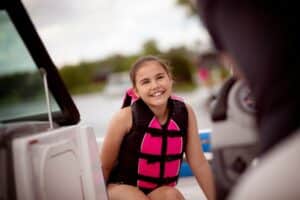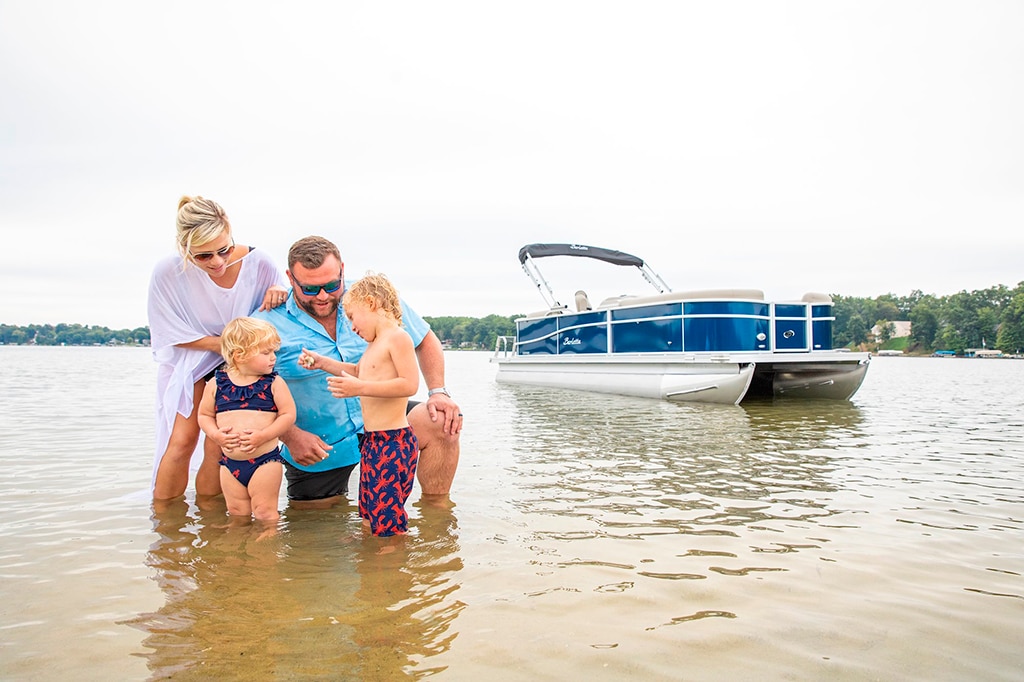When enjoying your boat, safety has to be at the forefront of your plans. Making sure your boat is equipped with the correct safety equipment, and that you and your passengers know how to use it properly, is essential to ensuring a safe, fun, boating experience. There is an old saying “failing to plan is planning to fail,” and there is no exception when it comes to the safety equipment on your boat.
All recreational boats are required to have size-specific safety equipment onboard which may include, but not limited to: life jackets, fire extinguishers, sound-producing devices, visual distress signals, backfire flame control, and navigation controls. The US Coast Guard has federally required minimum safety standards depending on the size of the vessel, and the NJ State Police Marine Services Bureau outlines these requirements. They also provide a downloadable PDF equipment checklist.
When it comes to safety equipment for your boat, you have to make sure that it is reliable and well-tested. Inside our Ship’s store, we sell an array of equipment designed to keep you and your passengers safe while on the water.
What safety equipment, specifically, do I need for my boat?
The size/type of equipment required for your vessel will depend on the size of the boat. However, there is a basic minimum that all boats need, regardless of size.
- Personal Flotation Devices – in all cases, one Type I, II, III, or V is required per person on board, and all PFD must be Coast Guard approved. If your boat is 16′ or longer, you must also have onboard at least one Type IV throwable.
- Visual Distress Signals – For vessels that are less than 16′, you need night signals when operating at night – the date of manufacture must be within 42 months of the current date. When operating a boat 16′ or longer, you need to upgrade your distress signals: a minimum of three-day use and three-night use, or three day/night combination pyrotechnic device. You may also use non-pyrotechnic substitutes: 1 orange distress flag for use during the date, and 1 electric SOS signal light for use at night. Pyrotechnic signals must also have a manufacture date within 42 months of the current date.
- Fire Extinguishers – Fire extinguishers are required on boats with permanent fuel tanks, enclosed living spaces, and enclosed engine compartments. The type, and the number of units, depends on the size of the boat. For a vessel up to 26′, you need to have one B-I, any type. For a boat between 26′ and 40′, you need to have One B-II or two B-I, and for a boat between 40′ and 65′ feet you need One B-II and one B-I, or three B-I. Beyond that size, the number and type of extinguisher depend on the weight of the vessel.
- Sound Producing Devices – for vessels under 40′ it is recommended that you have onboard a horn or whistle to signal intentions or position. Above 40′ you also should have a bell.
- Marine Sanitation Devices – for any vessels with an installed toilet facility must have an operable Coast Guard-certified Type I, II, or III Marine Sanitation Device. This is subject to local law.
- Backfire Flame Arrestor – All gasoline-powered engines built after August 1980, except outboard motors, are required to have one Coast Guard-approved device on each carburetor.
- Ventilation – Any gasoline-powered vessel with enclosed engine compartments built after August 1980 are required to have proper ventilation.
Here come the Newtons!
 The US Coast Guard as removed references to Type codes in regulation on the tabs and labels of Coast Guard-approved personal floatation devices, even though most PFD on the market still carry the “Type-based” labels. Moving forward, the Coast Guard is phasing out the Type system and will be replaced with icon-based labels that give the devices buoyancy rating in Newtons. A Newton is how much force is required to make a mass of one kilogram accelerate at a rate of one meter per second squared. These icons, along with others, will indicate the limitation of the use of the device. This does not mean that your old life jackets need to be replaced – so long as they still meet minimum safety requirements, and fit the intended user, you will be fine. But for those purchasing new personal floatation devices, you may be a bit confused by the new system. Here at Sheltered Cove, our award-winning staff can help you get the exact equipment that you need.
The US Coast Guard as removed references to Type codes in regulation on the tabs and labels of Coast Guard-approved personal floatation devices, even though most PFD on the market still carry the “Type-based” labels. Moving forward, the Coast Guard is phasing out the Type system and will be replaced with icon-based labels that give the devices buoyancy rating in Newtons. A Newton is how much force is required to make a mass of one kilogram accelerate at a rate of one meter per second squared. These icons, along with others, will indicate the limitation of the use of the device. This does not mean that your old life jackets need to be replaced – so long as they still meet minimum safety requirements, and fit the intended user, you will be fine. But for those purchasing new personal floatation devices, you may be a bit confused by the new system. Here at Sheltered Cove, our award-winning staff can help you get the exact equipment that you need.
The importance of boating safety, and in particular personal safety equipment, cannot be stressed enough. In 2017 the US Coast Guard states that in 76 percent of fatal boating accidents, the victims drowned. Of those who drowned in 2017, 84 percent were not wearing a lifejacket. Here in New Jersey, children under the age of 12 are required by law to wear a life jacket, unless they are in a fully enclosed cabin that is a permanent, non-removable part of the boat.
We have dealt with a lot in the first part of 2020, and now that marinas are open for boating, many of us are excited to get back on the water. Let’s all make sure to take the proper safety precautions this year and make the 2020 boating season one to remember.
If you have any questions or concerns about your boats’ safety equipment or need repairs done to your boat in order to remain safe, please give us a call or text us at (609) 296-9400

